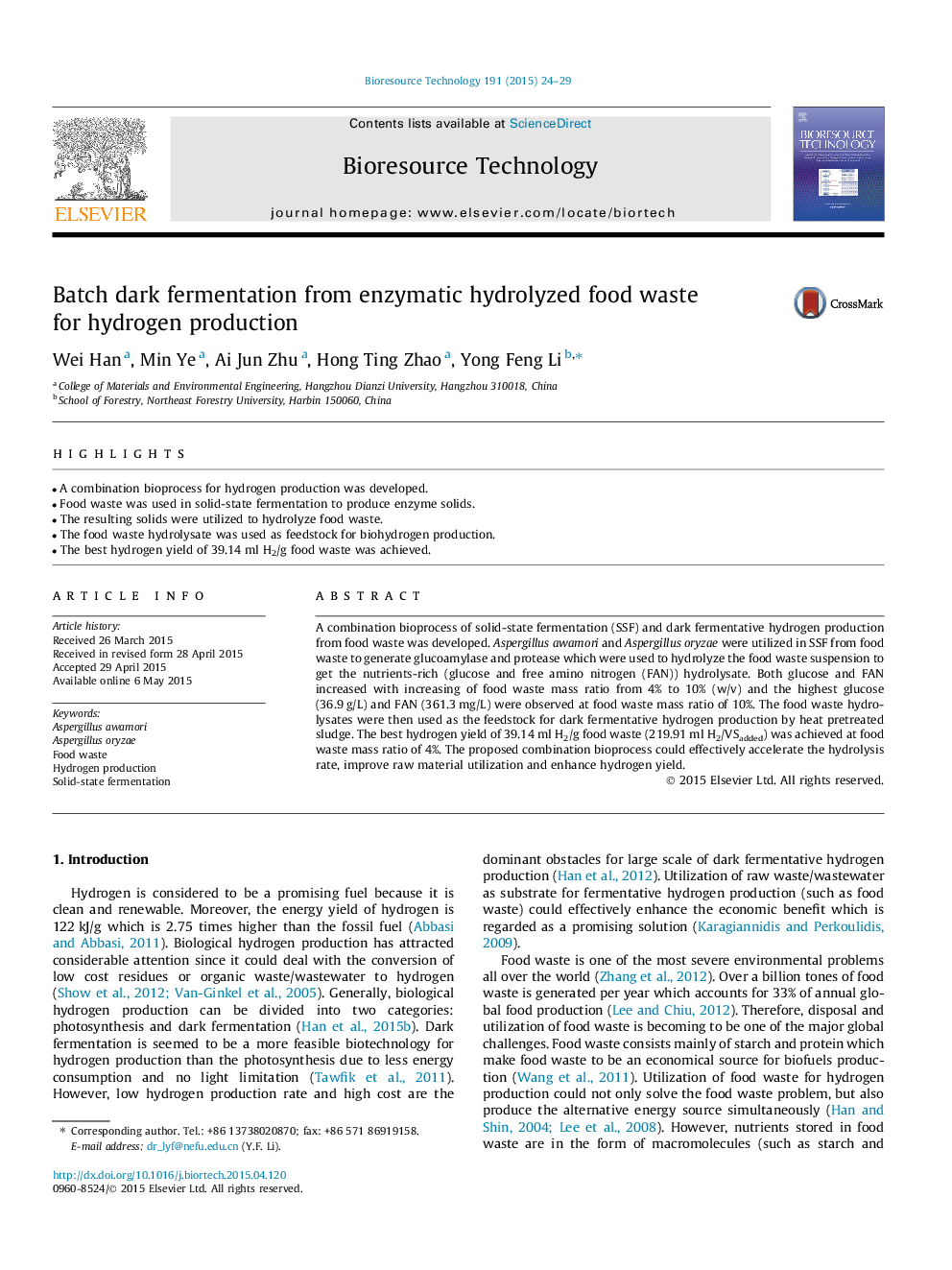| Article ID | Journal | Published Year | Pages | File Type |
|---|---|---|---|---|
| 679574 | Bioresource Technology | 2015 | 6 Pages |
•A combination bioprocess for hydrogen production was developed.•Food waste was used in solid-state fermentation to produce enzyme solids.•The resulting solids were utilized to hydrolyze food waste.•The food waste hydrolysate was used as feedstock for biohydrogen production.•The best hydrogen yield of 39.14 ml H2/g food waste was achieved.
A combination bioprocess of solid-state fermentation (SSF) and dark fermentative hydrogen production from food waste was developed. Aspergillus awamori and Aspergillus oryzae were utilized in SSF from food waste to generate glucoamylase and protease which were used to hydrolyze the food waste suspension to get the nutrients-rich (glucose and free amino nitrogen (FAN)) hydrolysate. Both glucose and FAN increased with increasing of food waste mass ratio from 4% to 10% (w/v) and the highest glucose (36.9 g/L) and FAN (361.3 mg/L) were observed at food waste mass ratio of 10%. The food waste hydrolysates were then used as the feedstock for dark fermentative hydrogen production by heat pretreated sludge. The best hydrogen yield of 39.14 ml H2/g food waste (219.91 ml H2/VSadded) was achieved at food waste mass ratio of 4%. The proposed combination bioprocess could effectively accelerate the hydrolysis rate, improve raw material utilization and enhance hydrogen yield.
